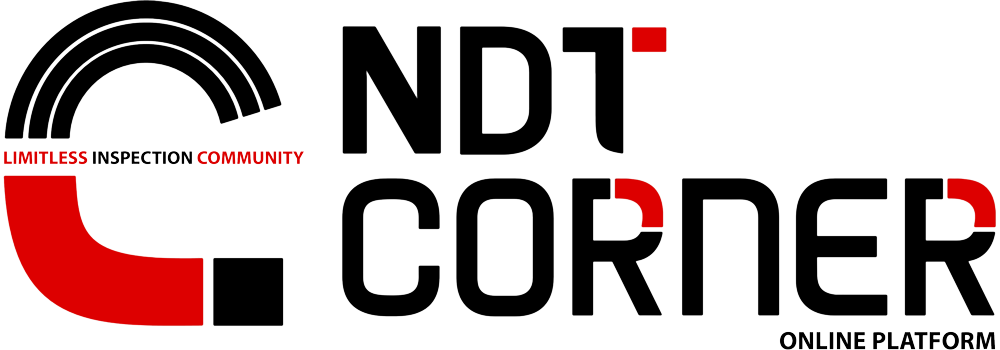
What is the accepted defect size in UT Testing?
30 Oct 2022 Download PDF
Acceptance Criteria:
ASME Section VIII Division 1 – Pressure Vessel Construction – Ultrasonic Testing (UT) Inspection Services
These Standards shall apply unless other standards are specified for specific applications within this Division.
Imperfections which produce a response greater than 20% of the reference level shall be investigated to the extent that the operator can determine the shape, identity, and location of all such imperfections and evaluate them in terms of the acceptance standards given in (a) and (b) below.
- Indications characterized as cracks, lack of fusion, or incomplete penetration is unacceptable regardless of other imperfections are unacceptable. If the indications exceed the reference level amplitude and have lengths which exceed:
- 1/4 in. (6 mm) for t up to 3/4 in. (19 mm);
- 1/3t for t from 3/4 in. to 21/4 in. (19 mm to 57 mm); (3) 3/4 in. (19 mm) for t over 21/4 in. (57mm).
where t is the thickness of the weld excluding any allowable reinforcement. For a butt weld joining two members having different thicknesses at the weld, t is the thinner of these two thicknesses. If a full penetration weld includes a fillet weld, the thickness of the throat of the fillet shall be included in t .
ASME B 16.34 – Valves – Ultrasonic Testing
Acceptance Standards.
ASME B 31.1 – Power Piping – Ultrasonic Testing .
Welds that are shown by ultrasonic examination to have discontinuities that produce an indication greater than 20% of the reference level shall be investigated to the extent that ultrasonic examination personnel can determine their shape, identity, and location so that they may evaluate each discontinuity for acceptance in accordance with (B.1) and (B.2) below.
(B.1) Discontinuities evaluated as being cracks, lack of fusion,. or incomplete penetration are unacceptable regardless of length.
(B.2) Other discontinuities are unacceptable if the indication exceeds the reference level and their length exceeds the following:
(B.2.1) ¼” (6.0 mm) for t up to ¾” (19.0 mm).
(B.2.2) 1/3 t for t from ¾” (19.0 mm) to 2 ¼ “ (57.0 mm).
(B.2.3) ¾”. (19.0 mm) for t over 2¼” (57.0 mm)
Where t is the thickness of the weld being examined. If the weld joins two members having different thicknesses at the weld, t is the thinner of these two thicknesses.
ASME B31.3 Process Piping – Ultrasonic Testing
Inspection of Weld Joints carried as per ASME Section V , Article 4
Pipe and Tubing
- Pipe and tubing, required or selected in accordance with Table K305.1.2 to undergo ultrasonic examination, shall pass a 100% examination for longitudinal defects in accordance with ASTM E213 Ultrasonic Testing of Metal Pipe and Tubing. Longitudinal (axial) reference notches shall be introduced on the outer and inner surfaces of the calibration (reference) standard in accordance with Fig. 3(c) of ASTM E213 to a depth not greater than the larger of 0.1 mm (0.004 in.) or 4% of specimen thickness and a length not more than 10 times the notch depth.
- Acceptance Criteria. Any indication greater than that produced by the calibration notch representation
Welds over 6mm thick can be ultrasonically tested in reference with procedure given in ASME Sec V article 4.
Indications shall be sized using the applicable technique(s) provided in the written procedure for the examination method. Indications shall be evaluated for acceptance as follows:
- All indications characterized as cracks, lack of fusion, or incomplete penetration are unacceptable regardless of
- Indications exceeding 1/8 in. (3 mm) in length are considered relevant, and are unacceptable when their lengths exceed
- 1/8 in. (3 mm) for t up to 3/8 in. (10 mm).
- 1/3t for t from 3/8 in. to 21/4 in. (10 mm to 57 mm).
(3) 3/4 in. (19 mm) for t over 21/4 in. (57 mm),
where “t” is the thickness of the weld excluding any allowable reinforcement.
For a butt weld joining two members having different thicknesses at the weld, t is the thinner of these two thicknesses.
If a full penetration weld includes a fillet weld, the thickness of the throat of the fillet shall be included in t .
API 1104 Welding of Pipelines & Related Facilities – Ultrasonic Testing – Acceptance level
- Acceptance Standards 9.6.2.1 Indications determined to be cracks (C) shall be considered
- Linear surface (LS) indications (other than cracks) interpreted to be open to the D. or O.D. surface shall be considered defects should any of the following conditions exist:
- The aggregate length of LS indications in any continuous 12”(300-mm) length of weld exceeds 1”. (25 mm).
- The aggregate length of LS Indications exceeds 8% of the weld
- Linear buried (LB) indications (other than cracks) interpreted to be subsurface within the weld and not I.D. or O.D. surface-connected shall be considered defects should any of the following conditions exist:
- The aggregate length of LB indications in any continuous 12”(300-mm) length of weld exceeds 2” (50 mm).
- The aggregate length of LB indications exceeds 8% of the weld
- Transverse (T) indications (other than cracks) shall be considered volumetric and evaluated using the criteria for volumetric indications. The letter T shall be used to designate all reported transverse indications.
- Volumetric cluster (VC) indications shall be considered defects when the maximum dimension of VC indications exceeds 1/2 “ (13 mm).
- Volumetric individual (VI) indications shall be considered defects when the maximum dimension of VI indications exceeds 1/4 “ (6 mm) in both width and
- Volumetric root (VR) indications interpreted to be open to the D. surface shall be considered defects should any of the following conditions exist:
- The maximum dimension of VR indications exceeds 1/4“ (6mm).
- The total length of VR indications exceeds 1/2 “ (13 mm) in any continuous 12” (300 mm)
- Any accumulation of relevant indications (AR) shall be considered a defect when any of the following conditions exist
- The aggregate length of indications above evaluation level exceeds 2 “(50 mm) in any 12” (300mm) length of
- The aggregate length of indications above evaluation level exceeds 8% of the weld.

